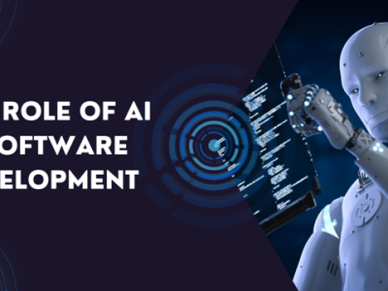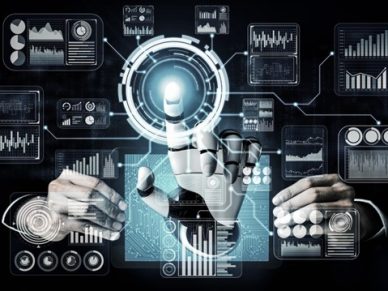The possibilities – and limitations – of AI in scientific research
When it comes to scientific research, AI can’t come up with new angles or paths to follow. But what it can do extremely well is synthesize, predict, and generate data. And those qualities make it extremely valuable to advancing many fields, according to Positron Networks CEO and co-founder Siddhartha Rao.
“Unfortunately, you will not see ML models solving the theory of gravity. They won’t be able to tell you what happens in the black hole yet,” he told BOSS. “They’re going to tell you a lot about how black holes operate and what is the current state of experimentation and hypothesis related to black holes. But they can’t come up with novel concepts yet.”
What they do well is very quickly process large amounts of data, help scientists build their research plans, and reproduce difficult-to-replicate experiments. It can be difficult to recreate the exact conditions of one researcher’s lab in another, but with AI can they recreate the conditions and reproduce the results of physical and virtual experiments easily.
“Being able to solve across the reproduction side of the problem with AI/ML is super exciting in terms of how scientists are using AI and ML to accelerate their collaboration with peers.”
Prediction Tools

With features like the ability to backspace, models like GPT 4.0 and Entropic can occasionally throw out a wild idea that’s worth following up on and could lead to a breakthrough, but Rao likens that to playing roulette with scientific discovery. Hallucinations can be good, but they have to be rooted in logic.
“A lot of people thought Einstein’s view of relativity was a hallucination when he came up with it, or that quantum mechanics was a hallucination as well. Your hallucination today is a scientific discovery tomorrow,” he said.
The problem with current AI models is their hallucinations tend to be logically incoherent. What they excel at, though, is accelerating the human work currently going on. That’s where the real benefit is, Rao said.
Machine learning is now a table-stakes data science modeling and prediction tool, especially when it comes to complex non-linear systems. This can enable major advances in fields like weather forecasting, biochemistry, and oil and gas geology. AI provides the infrastructure to build models that can predict extremely complex systems like when a flood will occur, how a protein will fold, or how a particular molecule in a drug will fit into a cell.
The capabilities of chips to multiply larger and larger matrices can make model orders of magnitude better at predicting extremely complicated environments.
“What is the weather going to be like 10 years from now in the Gulf of Oman, for example, at 2 in the afternoon?” he posited. “We might be able to start forecasting that with some level of reliability and being able to forecast that far in the future in such an insanely complicated system means that not only is the overall science going to get better, but all of the dependent economic society and infrastructure dependencies that rely on that kind of data are also going to get better.”
Access Granted

While these capabilities have world-changing potential, given the expense of AI hardware and the skill sets required to program it, advanced technology isn’t readily available to most scientists. Unsure which devices to invest in to successfully run their experiments, researchers tend to go for the most expensive option and hope it fits their needs. That often breaks their budgets or isn’t really what they need.
Positron is building an application to provide researchers with access to their technology on an as-needed basis. All they need is knowledge of a programming language of their choice, and they can build their models, only having to pay for the time they’re using a device.
“For $100, for example, a scientist can gain access to a top-of-the-line NVIDIA GPU, be able to run one of the most advanced models on it, and be able to get their results directly from their laptop without really having to learn anything about cloud computing, GPUs, NVIDIA, AWS, any of that stuff,” Rao said.
The idea is they can advance their field without breaking the bank, getting big results out of small grants. Researchers can even show the scientific models they’re using, and AI instantly determines the right computing environment or GPU to use for their project.
“Instead of one out of 100 scientists being able to run their experiments, we’re now seeing 60, 70 out of those 100 scientists being able to run an experiment,” Rao said. “In one lab, they’ve gone from being able to run only about 20 to 30 experiments a month to being able to run 300 to 400 experiments in that same month.”
Best Use

Just as important as the democratization of AI and ML to advancing scientific progress is the efficient use of these powerful tools. A “space race” mentality has taken hold, with everyone trying to be the first to make AI that can “reason” or mesh incongruent ideas and produce new ones.
“A lot of companies, governments, and large enterprise customers are throwing money at the infrastructure to the tune of tens or hundreds of billions of dollars,” Rao said. “They’re building so many data centers that the power grid can’t even keep up.”
Enabling scientists to collaborate better and advance science is great, but there’s only so much money available to governments and private enterprises to invest in AI without getting a good return on investment.
“If you’re able to get 10 times the model execution per dollar as your competitive counterpart on a global level, on an enterprise level, that’s when you get benefit from AI.”
Right now, Rao says, a lot of money is being thrown away on inefficient and poorly utilized infrastructure.
“The enterprises and the countries that do efficiently use that money, they’re going to be very successful with AI and they’re going to be able to have broad application of AI, whereas the ones who don’t, they’re just going to waste a large amount of money with no real benefit.”
These tools have the power to aid scientific breakthroughs, but they must be used wisely.
















Leave a Reply